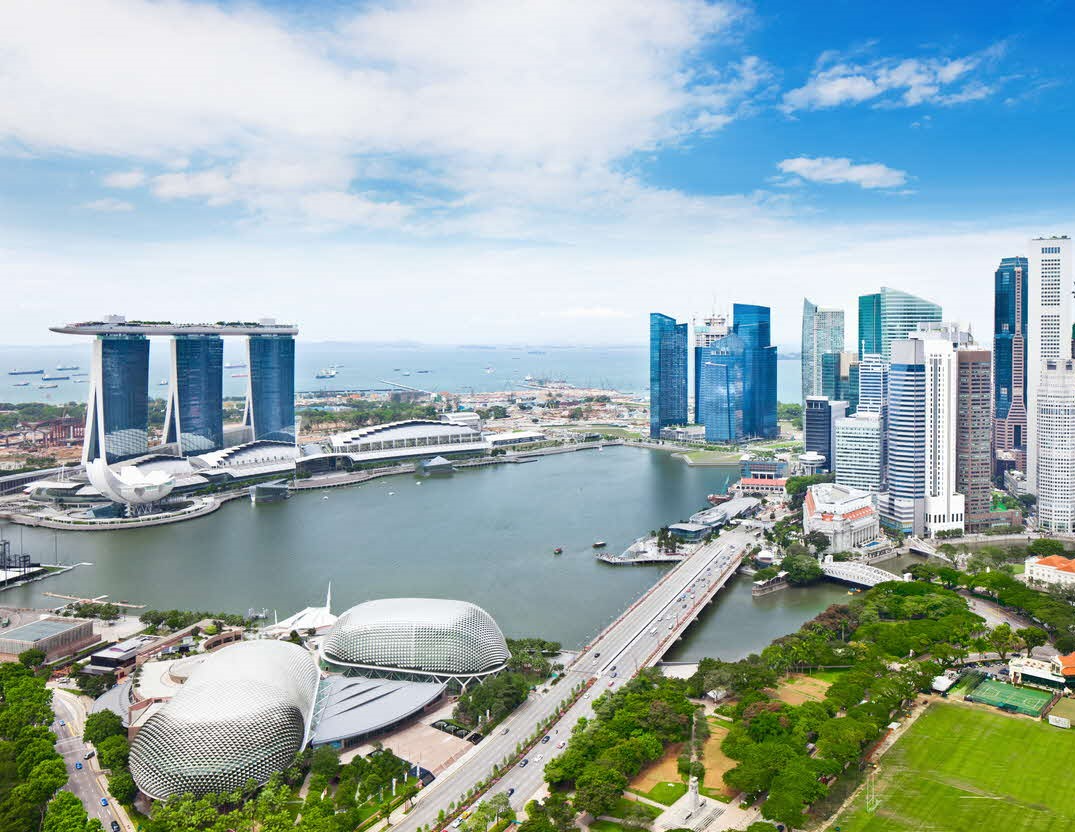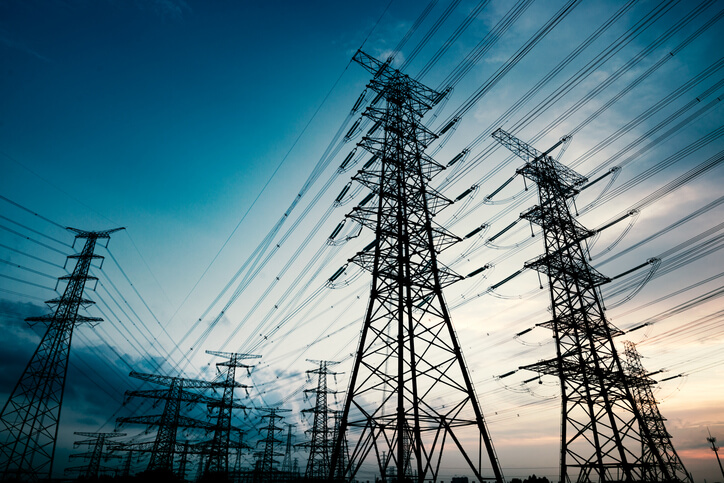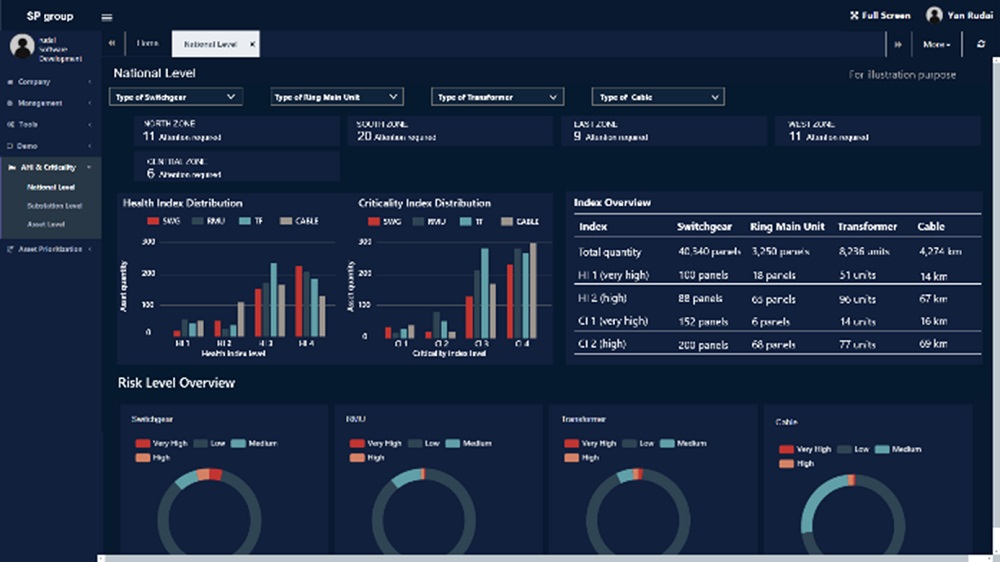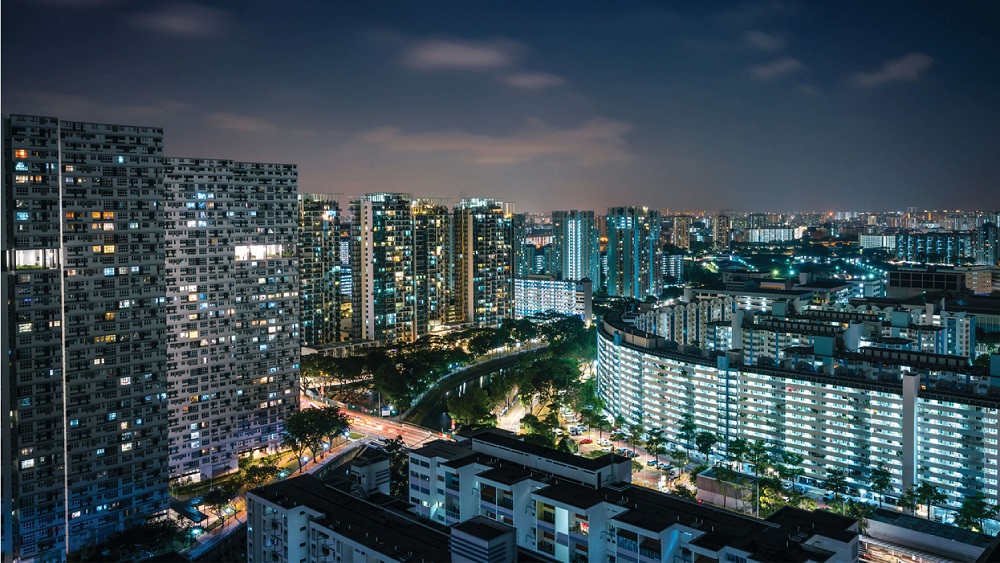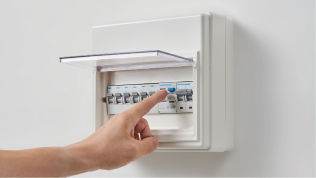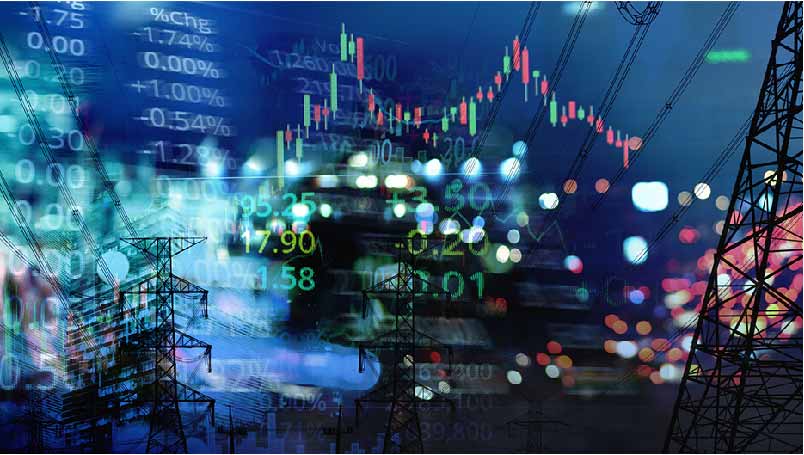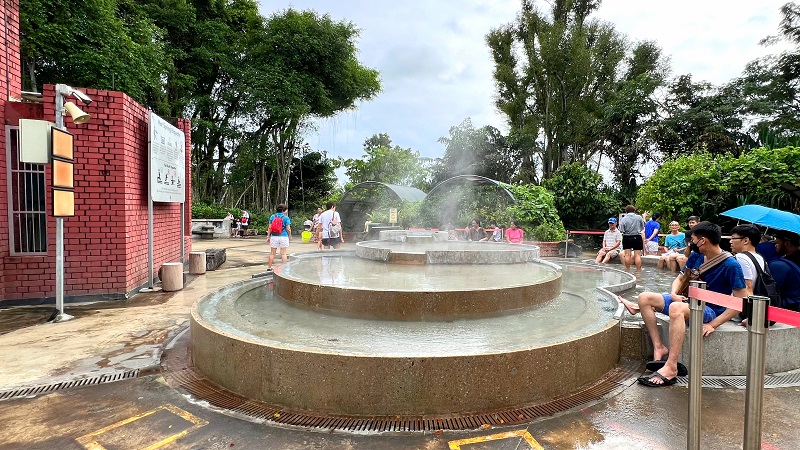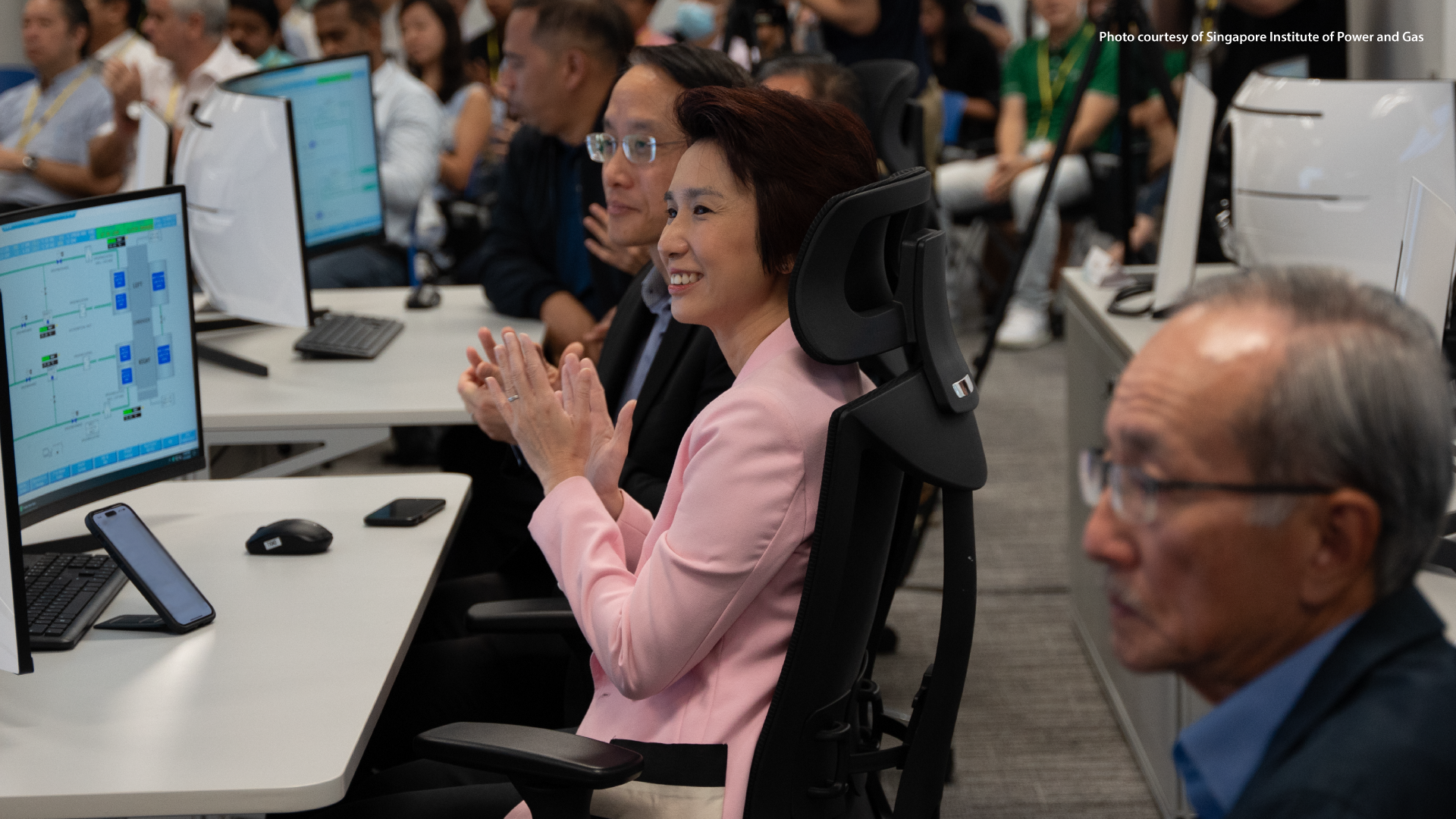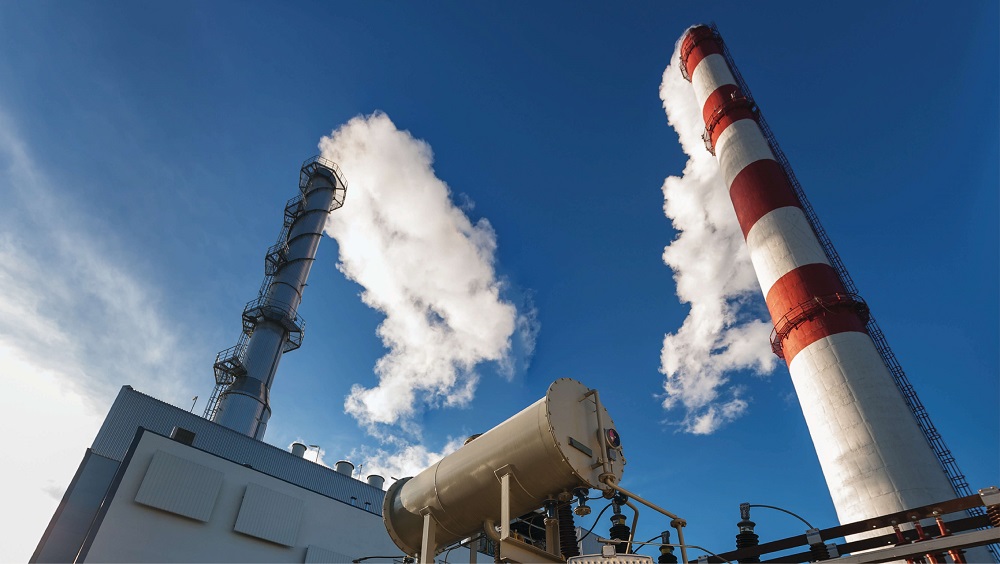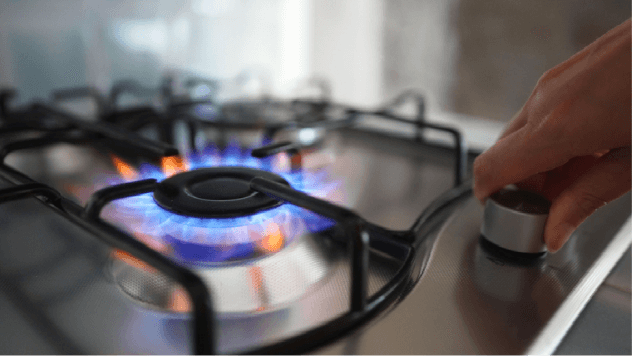Singapore Energy Statistics (SES) provides users with findings and statistics relating to Singapore’s energy landscape, including energy supply, transformation and demand, energy prices, solar and manpower in the power sector.
A Singapore Government Agency WebsiteHow to identify
Official website links end with .gov.sg
Government agencies communicate via .gov.sg websites
(e.g. go.gov.sg/open).Trusted websites
Secure websites use HTTPS
Look for a lock ( )or https:// as an added precaution. Share sensitive information only on official, secure websites.
Technical Notes
Objectives
Sources of Data
The data used in the publication were mainly obtained through administrative returns from licensees and through surveys. EMA licensees are required to submit regulatory returns under the Electricity and Gas Acts.
Energy statistics collected through the Joint Energy and Emissions Statistics Survey were also used in this publication. This survey is conducted by the Research & Statistics Unit of EMA, Economic Development Board (EDB) and National Environment Agency (NEA) under the Statistics Act 1973.
Other sources of data featured in this publication include energy products trade statistics from the Enterprise Singapore and energy consumption statistics from the NEA and prices statistics from the Energy Market Company (EMC).
Compilation Framework & Methodology
In compiling the energy statistics, EMA closely follows the recommended principles and methodologies set out in the International Energy Agency (IEA)’s Energy Statistics Manual. For the computation of the electricity grid emission factors and upstream fugitive methane emission factor, methodologies recommended by the Intergovernmental Panel on Climate Change (IPCC) are adopted.
Calorific Values
EMA uses Net Calorific Values (NCV) to convert all fuels from their original units to tonnes of oil equivalent (toe), unless otherwise stated.
Sectoral Activity
Sectoral activity refers to the principal activity (i.e., industrial, commerce and services, transport and others) undertaken by the enterprise. This is where the enterprise devotes most of its resources; or from which it derives most of its income. The classification of the principal activity of the enterprise in the SES publication is based on the Singapore Standard Industrial Classification (SSIC) 2020 for all reference years. SSIC adopts the basic framework and principles of the International Standard Industrial Classification of all Economic Activities (ISIC).
Units of Measurement
Energy products are recorded in their original units of measure. As these units of measure vary, quantities of energy products need to be converted into a common unit to allow for comparison and aggregation.
The common unit of measurement used to measure energy products in this publication is the tonne of oil equivalent (toe). According to the IEA, the tonne of oil equivalent is defined as follows:
1 tonne of oil equivalent = 41.868 gigajoules (GJ) = 11,630 kilowatt hours (kWh)
The tonne of oil equivalent should be regarded as a measure of energy content rather than a physical quantity. One tonne of oil is not equal to one tonne of oil equivalent. The following prefixes are used for multiples of the various units of measure:
kilo (k) = 1,000 or 103
mega (M) = 1,000,000 or 106
giga (G) = 1,000,000,000 or 109
tera (T) = 1,000,000,000,000 or 1012
All prices and tariffs are presented in Singapore dollars.
Re-referencing Price Indices
To allow comparisons between the movements of different prices, price indices series are pegged to a reference year. This is because of the shift from expressing the price indices in relation to a specific base year, to expressing the price indices in relation to a reference year common across all price indices.
Glossary
A-D
Autoproducers
These are enterprises that produce electricity but for whom the production is not their principal activity.
Build Margin (BM) Emission Factor
Crude Oil products include Crude Oil, Natural Gas Liquids, Refinery Feedstocks and Additives as well as other Hydrocarbons. The energy products and their corresponding HS 2022 codes under this category are:
Cable Detection Workers
A licensed cable detection worker is entitled to perform cable detection work. To minimise damages to electricity cables, it is mandatory to perform cable detection work prior to the commencement of any earthworks.
Cable detection work must be carried out by a licensed cable detection worker. He should inform or advise the earthworks contractor, who engaged him, of the location of the cables detected within the worksite.
Coal & Peat Products
Coal and Peat products include all coals, both primary (including Hard Coal and Lignite/Brown Coal) and derived fuels (including Patent Fuel, Coke over Coke, Gas Coke, BKB, Coke Oven Gas, Blast Furnace Gas and Oxygen Steel Furnace Gas). Peat is also included in this category. The energy products and their corresponding HS 2022 codes under this category are:
| Hard Coal | 27011210, 27011290, 27011900 |
| Anthracite | 27011100 |
| Lignite | 27021000, 27022000 |
| Peat | 27030010, 27030020 |
| Coke Oven Coke | 27040010, 27040020, 27040030 |
| Coal Tar | 27060000 |
| BKB/PB6 | 27012000 |
| Gas Works Gas | 27050000 |
Combined Cycle Gas Turbine (CCGT) Plant
Combined Cycle Gas Turbines are a form of highly-efficient energy generation technology that combines a gas-fired turbine with a steam turbine.The design uses a gas turbine to create electricity. It then captures the resulting waste heat to create steam which, in turn, drives a steam turbine to significantly increase the system’s power output without any increase in fuel.
Co-Generation (Co-Gen) Plant
Co-generation plants (also known as combined heat plants) are plants which simultaneously generate electricity and useful heat from a common fuel source. This improves overall thermodynamical efficiency.
Commercial Staff
Commercial Staff refers to Customer Accounts Manager, Business Analyst and those in Business Development, Sales and Marketing.
Commerce & Services-Related (Sector)
Commerce & Services-related consumption is defined by the following sub-sectors. This is in accordance to the Singapore Standard Industrial Classification 2022 (SSIC 2022).
| Wholesale and Retail Trade | SSIC Section G, Division 46-47 |
| Accommodation and Food Services Activities | SSIC Section I, Division 55 - 56 |
| Information and Communications | SSIC Section J, Division 58-63 |
| Financial and Insurance Activities | SSIC Section K, Division 64-66 |
| Real Estate Activities | SSIC Section L, Division 68 |
| Professional, Scientific and Technical Activities | SSIC Section M, Division 69-75 |
| Administrative and Support Services Activities | SSIC Section N, Division 77-82 |
| Public Administration and Defence | SSIC Section O, Division 84 |
| Education | SSIC Section P, Division 85 |
| Health and Social Services | SSIC Section Q, Division 86-88 |
| Arts, Entertainment and Recreation | SSIC Section R, Division 90-93 |
| Other Service Activities | SSIC Section S, Division 94-96 |
| Activities of Households as Employers of Domestic Personnel | SSIC Section T, Division 97 |
| Activities of Extra-Territorial Organisations and Bodies | SSIC Section U, Division 99 |
Corporate Services Staff
Corporate Service Staff refers to those in Finance, Human Resource, Legal, Administration, Information Technology and Corporate Communications
Crude Oil Products
Crude Oil products include Crude Oil, Natural Gas Liquids, Refinery Feedstocks and Additives as well as other Hydrocarbons. The energy products and their corresponding HS 2022 codes under this category are:
| Crude Oil | 27090010, 27090020, 27090090 |
| Natural Gas Liquids | 27111410, 27111490, 27112900 |
| Refinery Feedstocks | 27101920, 27109100, 27109900 |
| Additives/Oxygenates | 29091100, 29091900, 29092000, 29093000, 29094100, 29094300, 29094400, 29094900, 29095000, 29096000, 38112110, 38112190, 38112900, 38119090, 22072011, 22072019, 22072090, 29051100 |
E-H
Electricity Consumption
This refers to total electricity consumption by end users, including (embedded) consumption by Autoproducers.
Electrical Engineer
An electrical engineer’s licence entitles the holder to carry out the following electrical work:
- design, install, repair, maintain, operate, inspect, test and take full charge and responsibility for any electrical installation.
- An electrical engineer’s licence has a range of operation voltage restrictions. They are as follows:-
- in operation : “up to 1,000 volts”
- in operation : “up to 22,000 volts”
- in operation : “up to 66,000 volts”
- in operation : “up to 230,000 volts”
- restricted to particular installations
Electrical Technician
An electrical technician’s licence entitles the holder to carry out the following electrical work:
- install, repair, maintain, operate, inspect and test an electrical installation where the operating voltage of such an installation does not exceed 1,000 volts and the approved load of such installation does not exceed 500 kVA;
- design and submit plans and drawings of an electrical installation. The operating voltage of such an installation does not exceed 1,000 volts and the approved load of such installation does not exceed 150 kVA. The limitation of 1,000 volts shall not apply in the case of an Electric Discharge Lighting Circuit; and
- carry out any work or switching operation as instructed by or under the supervision of an authorised high voltage switching engineer.
Electrician
An electrician’s licence entitles the holder to carry out the following electrical work:
- design, install, repair, maintain, operate, inspect and test an electrical/supply installation where the operating voltage of such an installation does not exceed 1,000 volts and the approved load of such installation does not exceed 45 kVA. The limitation of 1,000 volts shall not apply in the case of an Electric Discharge Lighting Circuit;
- install, repair, maintain and operate, under the supervision of an electrical technician. The operating voltage of the, electrical/supply installation should not exceed 1,000 volts and the approved load of such installation should be more than 45 kVA but does not exceed 500 kVA; and
- carry out any work as instructed by or under the supervision of an authorised high voltage switching engineer.
Energy Balance
An energy balance is an accounting framework for compilation and reconciliation of data on all energy products entering, exiting, and used within the national territory of a given country during a reference period. It expresses all forms of energy in a common accounting unit, and shows the relationships between the inputs to, and the outputs from the energy transformation industries.
The balance is divided into three main blocks:
- The Top Block (Energy Supply) This shows the flow representing energy entering and leaving the national territory. It also includes stock changes to provide information on total energy supply on the national territory during the reference period.
- The Middle Block (Energy Transformation) This shows how energy is transformed, transferred, and used by energy industries for their own use and losses in distribution and transmission.
- The Bottom Block (Final Consumption) This shows final energy consumption by energy consumers.
Energy Costs
This is paid to the generation companies and reflects the cost of power generation.
Energy Products
Energy products refer to products exclusively or mainly used as a source of energy. They include energy in forms suitable for direct use (for instance, electricity and heat) and energy products that release energy while undergoing some chemical or other process (such as combustion). The classification of energy products is based on the Singapore Trade Classification, Customs & Excise Duties 2022 (STCCED 2022 or HS 2022). STCCED classification adopts the ASEAN Harmonised Tariff Nomenclature 2022 (AHTN 2022). This is based on the 6-digit Harmonised Commodity Description and Coding System developed by the World Customs Organisation (WCO) for the classification of goods.
Engineer
Engineer refers to Senior Engineer, Engineer, Executive Engineer, Principal Engineer, Shift Manager, Team leader and Deputy Team Leader.
Final Energy Consumption
Final energy consumption covers all energy supplied to the final consumer for all energy uses. It is usually disaggregated into the final end-use sectors such as Industrial, Commerce & Services, Transport, Households, and Others.
Final Natural Gas Consumption
This refers to total natural gas consumption by end-users, excluding consumption for electricity generation.
Gas Service Worker
A gas service worker licence entitles the holder to carry out the following gas service work where the operating pressure is not more than 30 mbar:
- to construct, fix, alter, repair and renew gas pipes and fittings;
- to install, maintain, repair and test gas appliances; and
- to install or remove gas meters and to turn-on the gas supply on behalf of a gas licensee.
Fuel Mix
Fuel mix refers to the proportion of fuel used for the generation of electricity. It is calculated using the output method which uses the amount of electricity generated and the corresponding type of fuel used to calculate the fuel mix for electricity generation. It takes the domestic fuel-to-electricity conversion efficiency of the generating plants and the type of plants used into account.
Gas Service Worker (Restricted)
A gas service worker licence (restricted) entitles the holder to carry out the following gas service work where the operating pressure is not more than 30 mbar:
- to install, maintain, repair and test gas appliances; and
- to install or remove gas meters and to turn-on the gas supply on behalf of a gas licensee.
Grid Charges
This is paid to SP Power Assets to recover the costs of transporting electricity through the grid
Grid Emission Factor (GEF)
The Grid Emission Factor measures average CO2 emission emitted per MWh of electricity. It is calculated using the Average Operating Margin (OM) method. This is the generation-weighted average CO2 emissions per unit net electricity generation of all generating power plants serving the system.
Households (Sector)
The scope of the Households sector includes all households in their capacity as final consumers.
I-N
Industrial-Related
Industrial-related consumption is defined by the following sub-sectors. This is in accordance to the Singapore Standard Industrial Classification 2022 (SSIC 2022).
| Agriculture and Fishing | SSIC Section A, Division 1-3 |
| Mining and Quarrying | SSIC Section B, Division 8-9 |
| Manufacturing | SSIC Section C, Division 10-32 |
| Utilities | SSIC Section D, Division 35, and Section E, Division 36-38 |
| Construction | SSIC Section F, Division 41-43 |
Installed Capacity of Solar Photovoltaic (PV) Systems
The installed capacity of solar PV systems can be expressed in MWp or MWac.
MWp refers to megawatt peak, which is a typical measure of the installed nameplate capacity for solar PV systems. MWp represents the amount of electric power that can be produced by a solar PV system at its peak under Standard Test Conditions (STC). MWac refers to the Alternating Current (AC) capacity of the inverters used in solar PV installations.
MWp and MWac numbers differ because of conversion losses from DC (MWp) to AC (MWac). EMA adopts the derate factor of 0.77 as proposed by the National Renewable Energy Laboratory (NREL) to account for these losses, i.e. 1 MWp is estimated to be equivalent to 0.77 MWac.
Main Power Producers
These are enterprises that produce electricity as their principal activity.
Management
Management refers to Chief Executive Officer and Head of Division/ Department/ Section.
Market Support Services Fees
This is paid to SP Services to recover the costs of billing and meter reading.
Methane Emission Factor (MEF)
The Methane Emission Factor measures average CH4 emission emitted per MWh of the set of five power units as defined in the BM.
Natural Gas
Natural Gas includes Natural Gas (excluding Natural Gas Liquids) and Town Gas. The energy products and their corresponding HS 2022 codes under this category are:
| Natural Gas | 27112190 |
| Liquefied Natural Gas | 27111100 |
O-R
Open Cycle Gas Turbine (OCGT) Plant
An Open Cycle Gas Turbine plant is a gas turbine power plant which discards the heat content of the exhaust gases exiting the turbine. This is as opposed to using a heat exchanger or recovered in a heat recovery steam generator (HRSG) as in a CCGT.
Others (Energy Products)
Others refer to other energy products that are not classified. These include Solar, Biomass, and Waste (such as Municipal Waste and Biogas). Municipal Waste is waste produced by residential, commercial and public services that is collected by local authorities for disposal in a central location for the production of electricity and/or heat.
Others (Non-Technical Staff)
“Others” include Assistant Technician, Semi-skilled Staff and other occupations not classified elsewhere.
Others (Sector)
“Others” refer to sectors or activities not adequately defined in SSIC 2022.
Own Use
Own use in electricity generation refers to the part of electricity generated which is consumed by the auxiliary equipment of the generation plant (such as pumps, fans and motors) under normal operations.
Petroleum Products
Petroleum Products include Ethane, LPG, Aviation Gasoline, Motor Gasoline, Jet Fuel, Kerosene, Gas/Diesel Oil, Fuel Oil, Naphtha, White Spirit, Lubricants, Bitumen, Paraffin Waxes, Petroleum Coke and other Petroleum Products. The energy products and their corresponding HS 2022 codes under this category are:
Light Distillates
| Gasoline (Aviation) | 27101231, 27101239 |
| Gasoline (Motor) | 27101211, 27101212, 27101213, 27101221, 27101222, 27101223, 27101224, 27101225, 27101226, 27101227, 27101228, 27101229 |
| Liquefied Petroleum Gas (LPG) | 27111200, 27111300, 27111900 |
| Naphtha | 27101280 |
| White Spirit SBP | 27101240, 27101250, 27101260, 27101270, 27101280, 27101291, 27101292, 27101299 |
Middle Distillates
| Gas/Diesel Oil | 27101971, 27101972 |
| Jet Fuel Kerosene | 27101981, 27101982 |
| Other Kerosene | 27101983 |
Heavy Distillates & Residuum
| Bitumen | 27132000, 27139000, 27141000, 27149000, 27150090 |
| Fuel Oil | 27101979 |
| Lubricants | 27101941, 27101942, 27101943, 27101944, 27101950 |
| Other Petroleum Products | 27071000, 27072000, 27073000, 27074000, 27075000, 27079100, 27079910, 27079990, 27081000, 27082000, 27101930, 27101960, 27101989, 27101990, 27102000 |
| Paraffin Waxes | 27121000, 27122000, 27129010, 27129090 |
| Petroleum Coke | 27131100, 2713120 |
Planning Area / Region
a. Central Region
Bishan, Bukit Merah, Bukit Timah, Downtown Core, Geylang, Kallang, Marine Parade, Marina East, Marina South, Museum, Newton, Novena, Orchard, Outram, Queenstown, River Valley, Rochor, Singapore River, Southern Islands, Straits View, Tanglin, Toa Payoh
b. East Region
Bedok, Changi, Changi Bay, Paya Lebar, Pasir Ris, Tampines
c. North-East Region
Ang Mo Kio, Hougang, Punggol, North Eastern Islands, Seletar, Sengkang, Serangoon
d. North Region
Central Water Catchment, Lim Chu Kang, Mandai, Simpang, Sembawang, Sungei Kadut, Woodlands, Yishun
e. West Region
Boon Lay, Bukit Batok, Bukit Panjang, Choa Chu Kang, Clementi, Jurong East, Jurong West, Pioneer, Tengah, Tuas, Western Islands, Western Water Catchment
Power System Operation & Market Administration Fees
This is paid to the Power System Operator and Energy Market Company to recover the costs of operating the power system and electricity wholesale market.
Registered Generation Capacity
The registered generation capacity of a generation facility is the maximum generation capacity approved by Power System Operator (PSO), and registered with Energy Market Company (EMC) to provide one or more of the following products in the Singapore Wholesale Electricity Market (SWEM):
1. Energy;
2. Reserve (Primary, Secondary or Contingency); and/or
3. Regulation.
Residency Status
Employees under Resident category refers to Singapore Citizens and Permanent Residents. Employees under Non-Resident category refers to foreigners.
S-Z
Steam Turbine Plant
A steam turbine is a turbine that is driven by the pressure of steam discharged at high velocity against the turbine vanes.
Tariffs (Electricity & Gas)
Annual and quarterly electricity and gas tariffs refer to the weighted average of tariffs for the specific periods as they may be adjusted at various periods throughout the year.
Technical Officer
Technical Officer refers to Principal Technical Officer, Senior Technical Officer and Technical Officer.
Technician
Technician refers to Senior Technician, Technician, Mechanic and Electrician.
Town Council & Public Housing Common Services
Town Council & Public Housing Common Services refers to applicants who are from Town Councils and/or provides public housing-common services.
Trading Staff
Trading Staff refers to System Balance Trader, Position Trader and Quantitative Analyst
Transport-related
Transport-related consumption is defined by the following subsectors. This is in accordance to the Singapore Standard Industrial Classification 2022 (SSIC 2022).
| Transport and Storage of which: | SSIC Section H, Division 49-53 |
Land Transport |
SSIC Division 49 |
Water Transport |
SSIC Division 50 |
Air Transport |
SSIC Division 51 |
Warehousing and Support Activities for Transportation |
SSIC Division 52 |
Postal and Courier Activities |
SSIC Division 53 |
Tri-Generation (Tri-Gen) Plant
Tri-generation plants are those which simultaneously generate electricity, useful heat and cooling from a common fuel source. This improves overall thermodynamical efficiency.
Waste-To-Energy (WTE) Plant
A Waste-To-Energy plant is a power plant which generates power from the incineration of waste.
